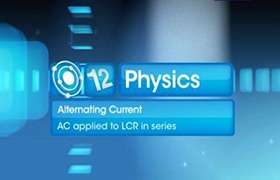CBSE Class 12-science Answered
derive LCR circuit also resonance in it
Asked by mahesh.kala | 17 Nov, 2014, 07:27: PM
Dear mahesh.kala@jvmicronics.com
Thanks for asking us a question in Ask the Expert section of TopperLearning.com.
The answer to the query that you have posted can be found in the NCERT XII text book part I. Kindly refer to page numbers 244-251 for your answer. It explains all the details needed for your query.
Regards
Topperlearning Team.
Topperlearning Team.
Answered by Romal Bhansali | 19 Nov, 2014, 10:16: AM
Concept Videos
CBSE 12-science - Physics
Asked by sky11841 | 08 Sep, 2021, 10:04: PM
CBSE 12-science - Physics
Asked by Topperlearning User | 22 Jun, 2015, 09:59: AM
CBSE 12-science - Physics
Asked by Topperlearning User | 22 Jun, 2015, 10:02: AM
CBSE 12-science - Physics
Asked by Topperlearning User | 22 Jun, 2015, 10:10: AM
CBSE 12-science - Physics
Asked by Topperlearning User | 22 Jun, 2015, 10:12: AM
CBSE 12-science - Physics
Asked by Topperlearning User | 22 Jun, 2015, 10:15: AM
CBSE 12-science - Physics
Asked by Topperlearning User | 22 Jun, 2015, 10:18: AM
CBSE 12-science - Physics
Asked by Topperlearning User | 22 Jun, 2015, 10:23: AM
CBSE 12-science - Physics
Asked by Topperlearning User | 22 Jun, 2015, 10:35: AM
CBSE 12-science - Physics
Asked by Topperlearning User | 22 Jun, 2015, 11:20: AM




